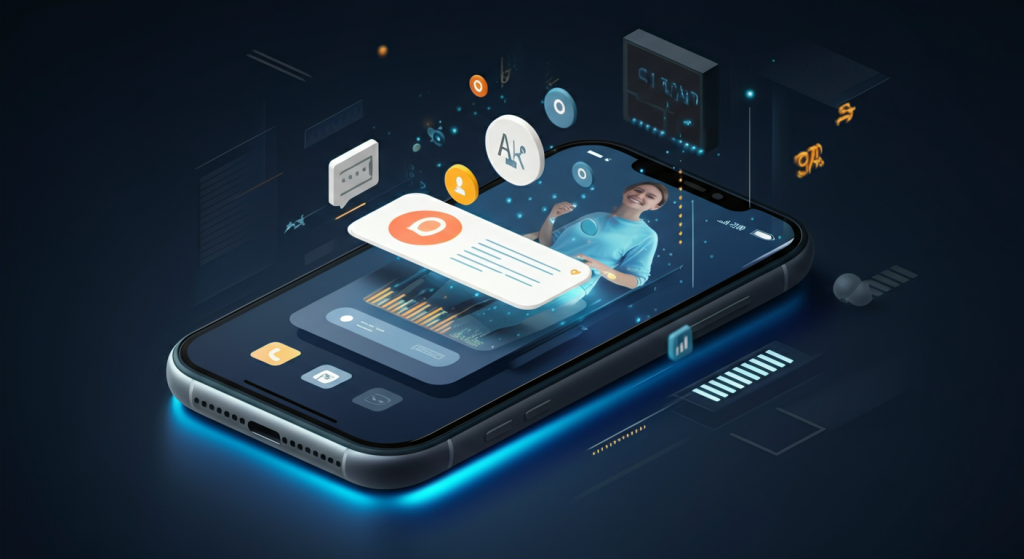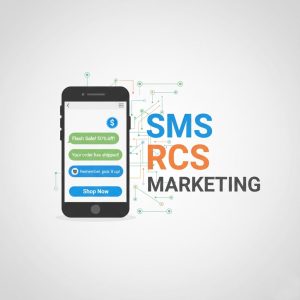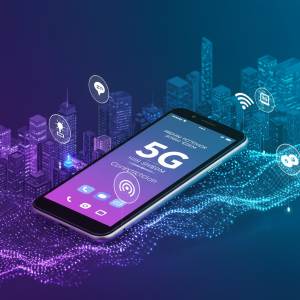AI-Powered Personalization in Mobile Marketing: Boost Engagement & Conversions

In today’s fast-paced digital landscape, consumers expect highly relevant and personalized experiences on their mobile devices. AI-powered personalization leverages advanced algorithms and data analytics to deliver tailored content, offers, and recommendations that resonate with individual users. By moving beyond generic campaigns, businesses can increase engagement, boost conversions, and foster long-term loyalty.
What Is AI-Powered Personalization?

AI-powered personalization refers to the use of machine learning (ML) models and artificial intelligence (AI) techniques to automatically analyze user data and behavior for the purpose of tailoring marketing messages. Unlike rule-based personalization, which relies on predefined segments, AI-based systems learn from real-time interactions, predict future behaviors, and dynamically adapt content. In the context of mobile marketing, this means delivering the right offers, notifications, and in-app experiences at the optimal time and on the most relevant channels. As AI algorithms evolve, they can uncover hidden patterns and preferences, enabling deeper levels of customization that drive measurable results. Learn more about Benefits of Mobile Marketing
Benefits of AI Personalization in Mobile Marketing
- Enhanced User Engagement: Personalized push notifications and in-app messages increase click-through rates and open rates by appealing to individual interests.
- Higher Conversion Rates: Tailored product recommendations and optimized call-to-action placements lead to greater sales uplift and lower cart abandonment.
- Improved Customer Retention: Relevant content fosters brand affinity and encourages repeat visits, reducing churn over time.
- Efficient Marketing Spend: By focusing on high-value segments, AI personalization ensures ad budgets are allocated where they deliver the greatest ROI.
- Real-Time Optimization: AI systems can adjust campaigns instantly based on live performance data, ensuring continuous improvement.
Key AI Techniques for Mobile Personalization
Data Collection & User Profiling
Effective personalization starts with robust data collection, including in-app behavior, location, device usage, and demographic details. AI-powered data platforms aggregate and process these multiple data streams to create detailed user profiles. By applying clustering algorithms, marketers can segment audiences into microgroups with shared characteristics, enabling highly targeted messaging.
Predictive Analytics & Machine Learning
Predictive analytics uses historical data to forecast future user actions, such as purchase likelihood or churn risk. Machine learning models continuously learn from new interactions, refine their predictions, and adjust campaign parameters. This adaptive learning helps marketers anticipate user needs and deliver proactive recommendations, further elevating the mobile experience.
Dynamic Content & Recommendation Engines
Recommendation engines use collaborative filtering and content-based algorithms to serve personalized product suggestions, articles, or in-app features. Dynamic content capabilities enable marketers to swap images, headlines, and offers in real time, ensuring each user sees the most relevant creative assets. This level of customization can dramatically increase engagement and revenue per user.
Implementing AI Personalization in Your Mobile Marketing Strategy
Integrating AI-driven personalization into your mobile marketing strategy involves several critical steps. Follow this roadmap to ensure a smooth implementation and maximize ROI.
1. Define Clear Goals & KPIs
Establish specific objectives such as improving retention rates, increasing average order value, or boosting app engagement. Select key performance indicators (KPIs) that align with these goals, such as click-through rates, conversion rates, lifetime value, and churn metrics.
2. Gather & Integrate Data
Collect data from multiple touchpoints, including mobile apps, websites, CRM systems, and third-party sources. Use a unified customer data platform (CDP) or data management solution to centralize information. Ensure compliance with privacy regulations such as GDPR and CCPA during data collection and storage.
3. Segment & Enrich User Profiles
Leverage AI models to analyze user behavior and segment audiences into micro-groups based on interests, purchase history, and engagement patterns. Enrich profiles with external data points like social media interests or browsing habits to refine personalization further.
4. Deploy AI Tools & Automate Workflows
Choose AI-driven marketing platforms that offer features such as predictive analytics, recommendation engines, and dynamic content generation. Automate campaign workflows to trigger personalized messages at key moments, such as onboarding milestones, cart abandonment, or post-purchase follow-ups.
5. Test, Optimize, & Scale
Continuously A/B test messaging, creative assets, and targeting criteria. Analyze performance metrics to identify winning variations and refine AI model parameters. As you achieve positive results, scale successful campaigns across additional segments and channels to drive further growth.
Real-World Examples
Leading brands are already leveraging AI personalization to transform their mobile experiences. For example, a global retailer uses AI to recommend products based on in-app browsing and past purchases, increasing average order value by 15%. A media company delivers personalized news feeds and push notifications that result in a 20% boost in daily active users. Even small businesses can adopt AI chatbots on mobile to provide instant support and tailored offers, significantly improving customer satisfaction.
Measuring Success & Key Metrics
Monitoring the impact of AI personalization requires tracking specific metrics that reflect user engagement and revenue. Key indicators include:
- Click-Through Rate (CTR): Measures the effectiveness of personalized notifications and messages.
- Conversion Rate: Tracks how well tailored recommendations lead to purchases or desired actions.
- Average Order Value (AOV): Indicates the revenue uplift generated by AI-driven suggestions.
- Customer Lifetime Value (CLV): Assesses long-term revenue impact from personalized experiences.
- Churn Rate: Evaluates retention improvements as a result of targeted outreach.
Challenges & Best Practices
While AI personalization offers significant benefits, marketers should be mindful of potential challenges:
- Data Privacy Concerns: Ensure transparent data policies and obtain user consent to build trust and comply with regulations.
- Data Quality Issues: Inaccurate or incomplete data can lead to irrelevant recommendations and poor user experiences.
- Integration Complexity: Integrating AI tools with existing martech stacks requires careful planning and technical expertise.
- Overpersonalization: Excessive customization can feel intrusive; balance personalization with user privacy and choice.
Best practices include maintaining data hygiene, regularly auditing AI models, and implementing user feedback loops. By addressing these challenges proactively, businesses can maximize the impact of their AI-driven campaigns.
Future Trends in AI-Powered Mobile Marketing

As AI technologies continue to evolve, several emerging trends will shape the future of mobile marketing:
- Voice and Conversational AI: Integrating voice assistants and chatbots for seamless conversational experiences on mobile devices.
- Augmented Reality (AR) Personalization: Combining AR overlays with AI to deliver immersive, context-aware marketing promotions.
- Hyperlocal Targeting: Leveraging geolocation data and AI to deliver real-time offers based on users’ immediate surroundings.
- Ethical AI Practices: Emphasizing transparency in algorithmic decision-making and bias mitigation to foster consumer trust.
Conclusion
AI-powered personalization is revolutionizing mobile marketing by enabling brands to deliver highly relevant, timely, and engaging experiences. By harnessing the power of machine learning and real-time data, businesses can increase customer satisfaction, drive conversions, and build lasting loyalty. While implementation requires careful planning, data governance, and ongoing optimization, the potential rewards are substantial. Start defining clear objectives, invest in the right AI tools, and continuously refine your approach to stay ahead in the competitive mobile landscape.





